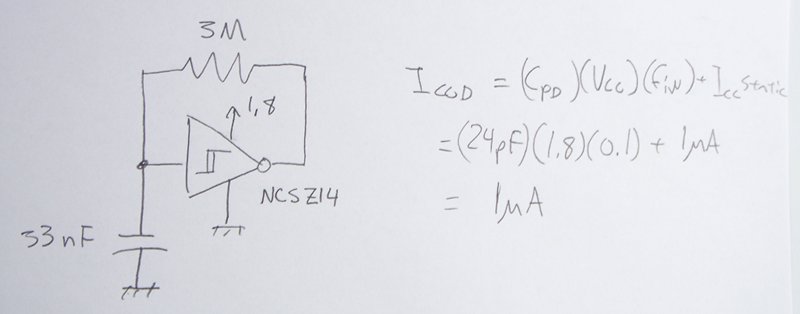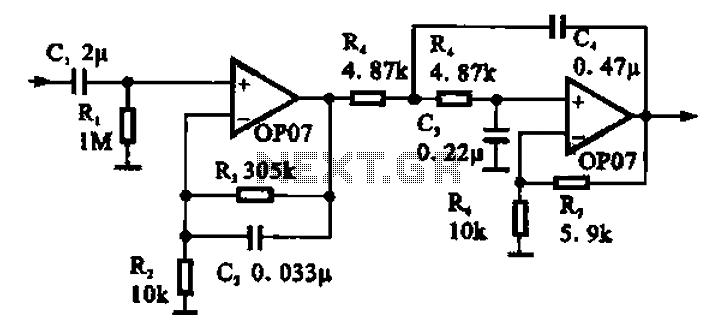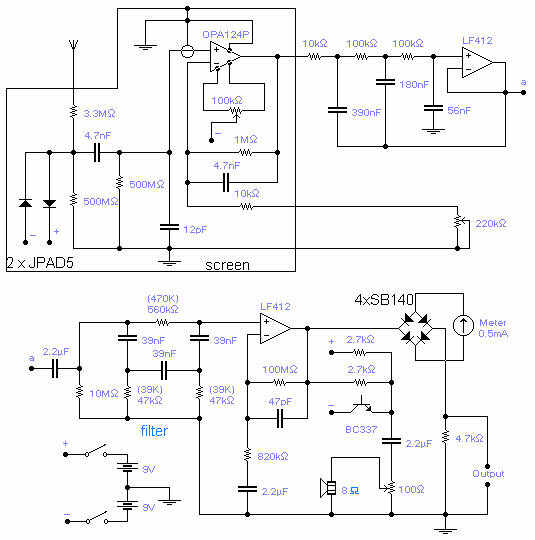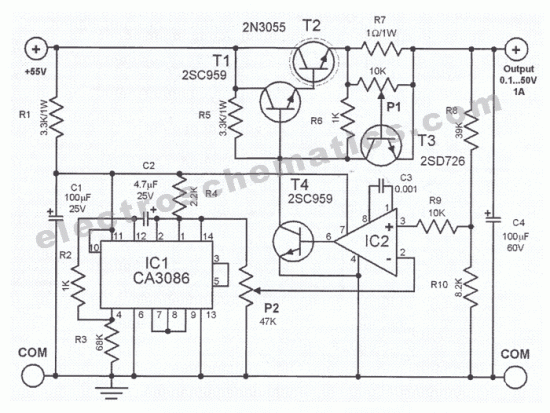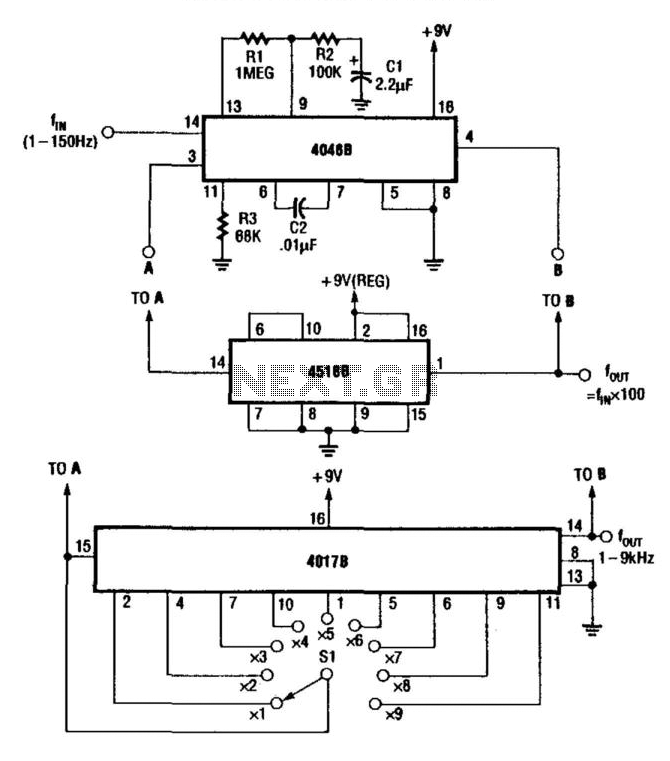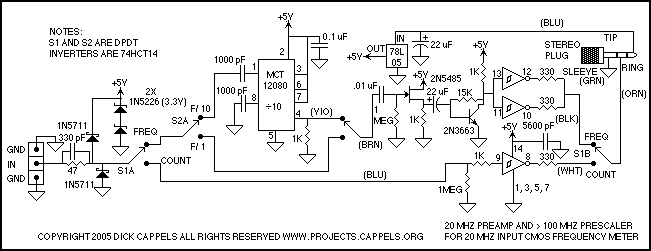
0.1 - 3.5GHz Prescaler
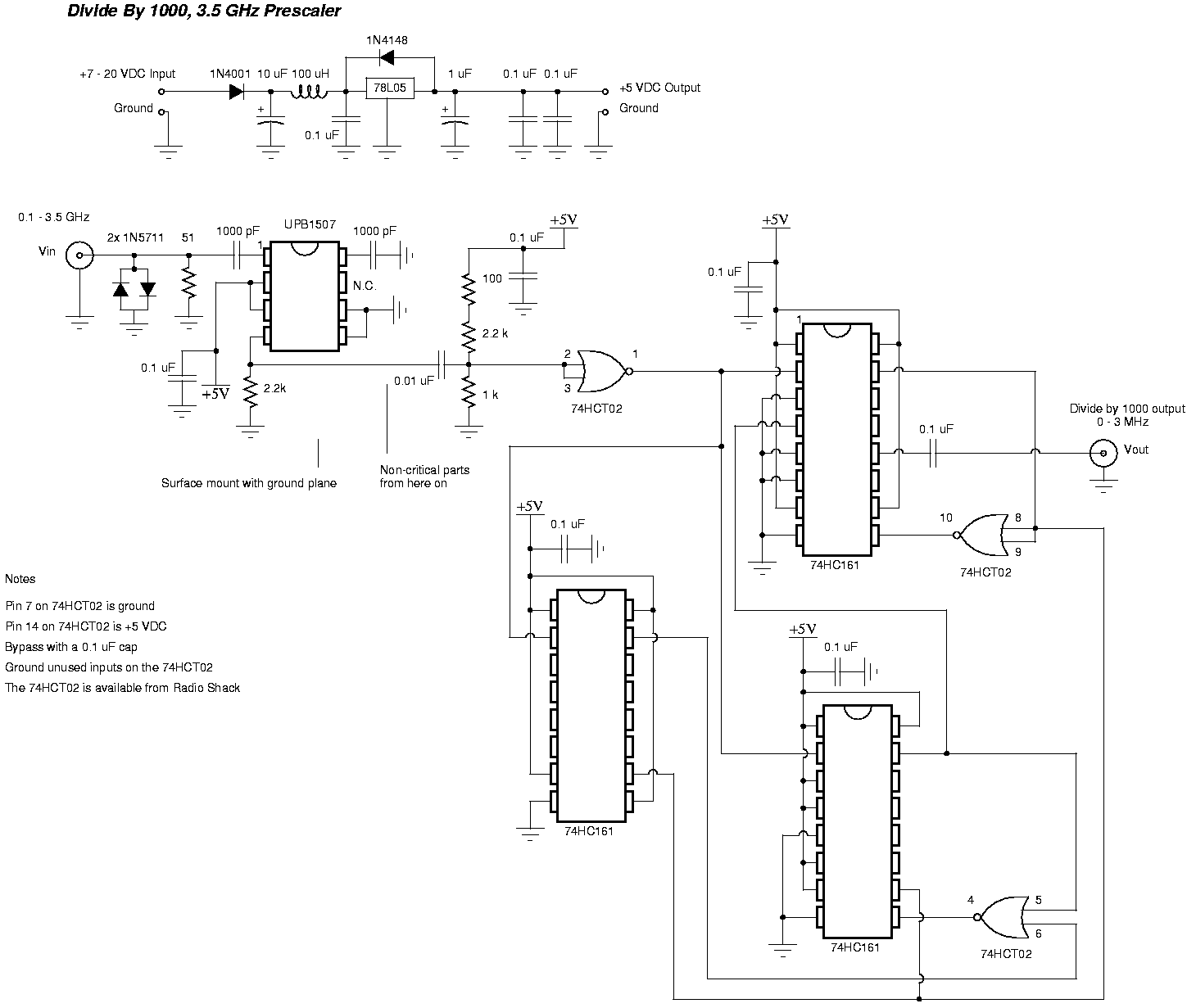
This prescaler is designed to divide an input frequency by 1000. It can handle a maximum input frequency of 3.5 GHz and converts it into 3.5 MHz, which can be measured using a standard frequency meter.
The prescaler circuit consists of several key components, including a high-frequency input stage, a frequency division stage, and an output stage. The input stage is typically designed to accommodate high-frequency signals, ensuring that the circuit can effectively process signals up to 3.5 GHz. This may involve the use of RF amplifiers or impedance matching networks to optimize signal fidelity.
The frequency division is achieved through a combination of flip-flops or counters that are configured to divide the input frequency by 1000. For instance, a series of binary counters can be employed, where each stage divides the frequency by 2, ultimately achieving the desired division ratio. The choice of components in this stage is critical, as they must operate efficiently at high frequencies while maintaining low phase noise and minimal signal distortion.
The output stage is responsible for converting the divided frequency output into a format suitable for measurement. This may involve additional filtering to remove harmonics and noise, ensuring that the output signal is clean and stable. The final output frequency of 3.5 MHz can then be easily measured using standard frequency meters, making the prescaler a valuable tool in various RF applications, including communications and signal analysis.
Power supply considerations are also essential in the design of this prescaler. A stable power supply is required to ensure that the circuit operates reliably across its specified frequency range. Additionally, proper grounding and layout techniques must be employed to minimize electromagnetic interference and ensure optimal performance. Overall, the prescaler is a crucial component for frequency management in high-frequency applications.This handy prescaler divides input frequency by 1000. It takes maximum input frequency of 3. 5GHz and converts it into 3. 5MHz that may be measured using standard frequency meter. 🔗 External reference
The prescaler circuit consists of several key components, including a high-frequency input stage, a frequency division stage, and an output stage. The input stage is typically designed to accommodate high-frequency signals, ensuring that the circuit can effectively process signals up to 3.5 GHz. This may involve the use of RF amplifiers or impedance matching networks to optimize signal fidelity.
The frequency division is achieved through a combination of flip-flops or counters that are configured to divide the input frequency by 1000. For instance, a series of binary counters can be employed, where each stage divides the frequency by 2, ultimately achieving the desired division ratio. The choice of components in this stage is critical, as they must operate efficiently at high frequencies while maintaining low phase noise and minimal signal distortion.
The output stage is responsible for converting the divided frequency output into a format suitable for measurement. This may involve additional filtering to remove harmonics and noise, ensuring that the output signal is clean and stable. The final output frequency of 3.5 MHz can then be easily measured using standard frequency meters, making the prescaler a valuable tool in various RF applications, including communications and signal analysis.
Power supply considerations are also essential in the design of this prescaler. A stable power supply is required to ensure that the circuit operates reliably across its specified frequency range. Additionally, proper grounding and layout techniques must be employed to minimize electromagnetic interference and ensure optimal performance. Overall, the prescaler is a crucial component for frequency management in high-frequency applications.This handy prescaler divides input frequency by 1000. It takes maximum input frequency of 3. 5GHz and converts it into 3. 5MHz that may be measured using standard frequency meter. 🔗 External reference
Warning: include(partials/cookie-banner.php): Failed to open stream: Permission denied in /var/www/html/nextgr/view-circuit.php on line 713
Warning: include(): Failed opening 'partials/cookie-banner.php' for inclusion (include_path='.:/usr/share/php') in /var/www/html/nextgr/view-circuit.php on line 713
